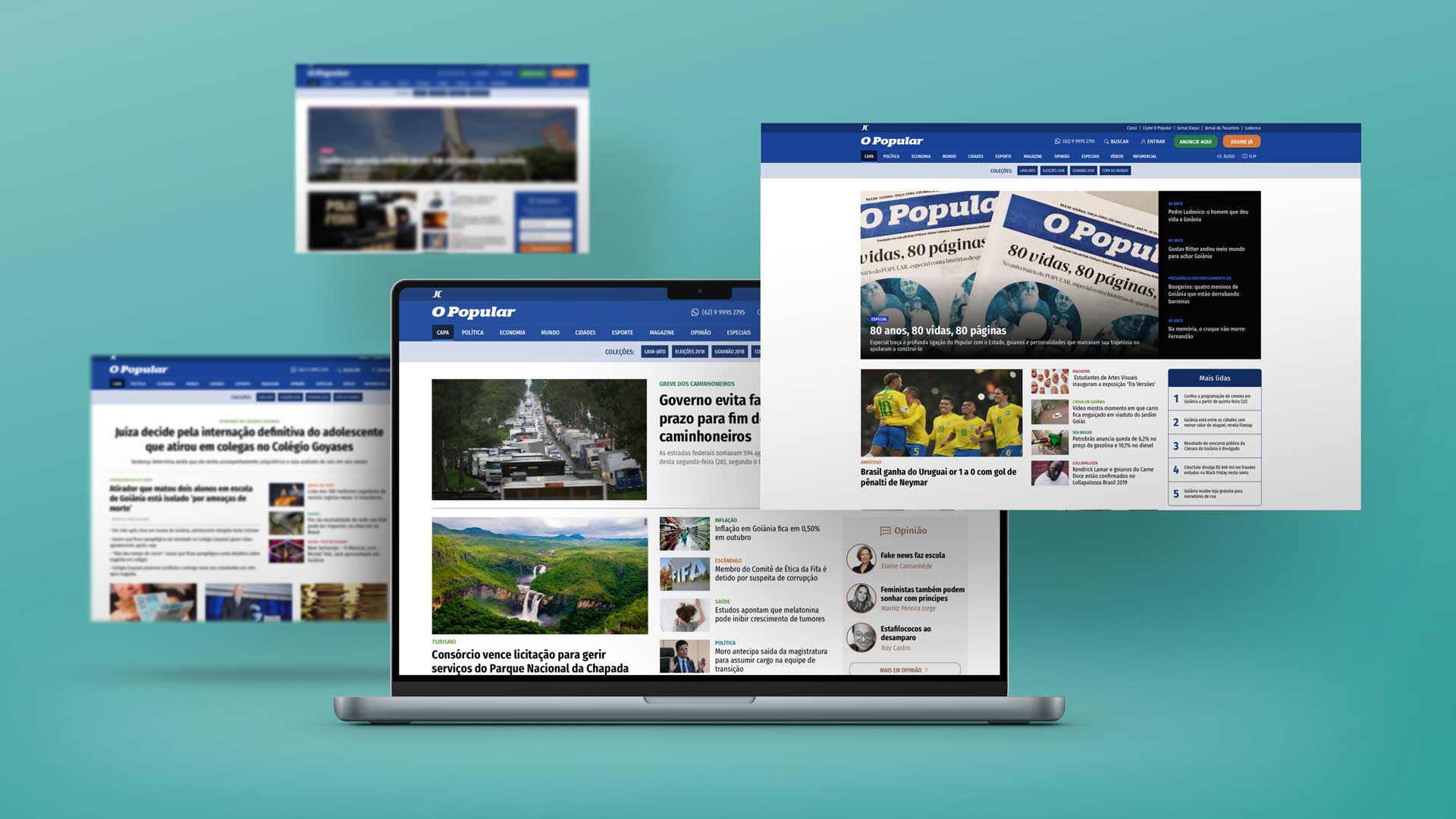The O Popular is a newspaper over 80 years old and is part of the portfolio of one of the largest Communication Groups in Brazil, the Jaime Camara Group.
O POPULAR
Boosting conversions of a long-established newspaper website
The Product
The Challenge
The shift from print to digital had a huge impact on the editorial market, and O Popular had to undergo a digital transformation to boost conversions and expand revenue.
- Convert more visitors to subscribers
- Increase revenue through online advertising
- Enable more visual editorial versatility
The Solution
By taking advantage of the large amounts of usage data collected in the product to perform quantitative data analysis, we were able to achieve outstanding results. We were also able to establish a foundational design system that sparked a new era within the organization.
I oversaw the project from start to finish, leading a team of three designers in a squad made of four engineers, one data analyst, and one product manager.
Role
Lead Product Designer
Responsibilities
- Research
- Wireframing
- Visual Design
- Design System
Industry
Company Size


Project Outcomes
654 %
Boost in subscription sales
Design System
Establishment of a foundational design system
INSIGHTS
Desktop Users
Cluttered Navigation Bar
Non-scrollers
Focused Strategy
WIREFRAMING
User retention strategies
Content areas

KEY SOLUTION ELEMENTS

Improved Visual Hierarchy

Widget Library

Online Advertising

Design System
Conversion Rate Optimisation
The conversion funnel analysis indicated that the average session time was outstandingly high, making conversion rates low to non-existent. Our challenge, then, was to create a seamless online checkout experience.
Analysis
We identified 18 product combinations that made the check-out process take up to seven steps.
- 7-step process
- 18 product combinations
- High bounce rates & average session time

The Paradox of Choice
Inspired by the book The Paradox of Choice by Barry Schwartz, our hypothesis was this huge number of decisions was confusing the users, leading to high bounce rates and lengthy session times.
Based on the most popular plans chosen by subscribers, we narrowed down the options to only three. By doing this, the buying process was reduced by around half of the original steps.

Testing the solution
We built a low-fidelity prototype and quickly tested it with five users who were asked to complete the subscription-buying process.
Through user testing, we found that there was potentially misleading information regarding the pricing. Adequate visual weight was added to these bits of information to avoid any misunderstanding. The efficacy of this new check-out flow was confirmed.




